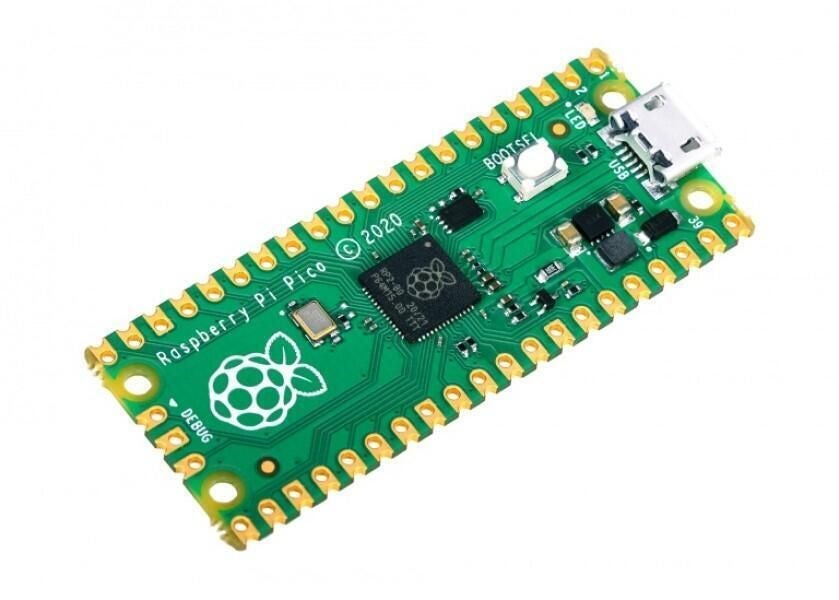
Image: Raspberry Pi
Raspberry Pi has entered the microcontroller market with the $4 Raspberry Pi Pico, a brand-new piece of hardware based on the company’s own custom silicon.
The Raspberry Pi Pico is the first microcontroller board from the British board maker and has been built around the new RP2040 chip.
SEE: Raspberry Pi: A cheat sheet (TechRepublic)
Whereas traditional Pi boards need to be paired with a microcontroller in order to control a physical device – say, a robot or a weather balloon – the Pico bridges this gap between hardware and software by providing a direct analogue connection to the end device.
James Adams, Raspberry Pi COO and hardware lead, offered a more technically compelling explanation of how the technology works. “Raspberry Pi on its own does not support analogue input; and while it is possible to run ‘bare metal’ software on a Raspberry Pi, software running under a general-purpose operating system like Linux is not well suited to low-latency control of individual I/O pins,” he said.
“Many hobbyist and industrial applications pair a Raspberry Pi with a microcontroller. The Raspberry Pi takes care of heavyweight computation, network access, and storage, while the microcontroller handles analogue input and low-latency I/O and, sometimes, provides a very low-power standby mode.”
The new RP2040 board is the first piece of in-house silicon designed by Raspberry Pi, with Adams explaining that creating the chip from scratch was the only way the company could achieve what it wanted from its first microcontroller-class product. Specifically, to combine high-performance and flexible I/O with an accessible price point.
SEE: Hardware inventory policy (TechRepublic Premium)
The result is what Adams labelled “an incredibly powerful little chip”. The RP2040 features a 133MHz dual-core Arm Cortex M0+ CPU, 264KB of on-chip RAM and support for up to 16MB of off-chip Flash memory, USB 1.1 and 30 GPIO pins, four of which can be used as analogue outputs.
All of this is crammed into a diminutive 7 x 7mm package containing just two square millimetres of 40nm silicon. The RP2040 is ideal of machine-learning applications, so Raspberry Pi has created a port of both TensorFlow Lite and MicroPython to help users get started.
For power users, Raspberry Pi provides a complete SDK of the C programming language as well as Visual Studio Code integration.
SEE: Lunchboxes, pencil cases and ski boots: The unlikely inspiration behind Raspberry Pi’s case designs (TechRepublic)
The Raspberry Pi Pico board itself pairs the RP2040 with 2MB of Flash memory. The power supply chip supports input voltages from 1.5 to 5.5V, meaning it can be powered by USB or through AA or lithium-ion batteries. The board measures in at 21mm x 51mm and features a single push button that can be used to boot the Pico into mass storage mode.
Customers can buy the Raspberry Pi Pico online from today. Alternatively, they can go out and pick up the latest edition of Hackspace magazine, which comes with a free Pico board.
A variety of accessories designed for the RP2040 platform by Adafruit, Arduino, Pimoroni, and Sparkfun are also available for pre-order.

